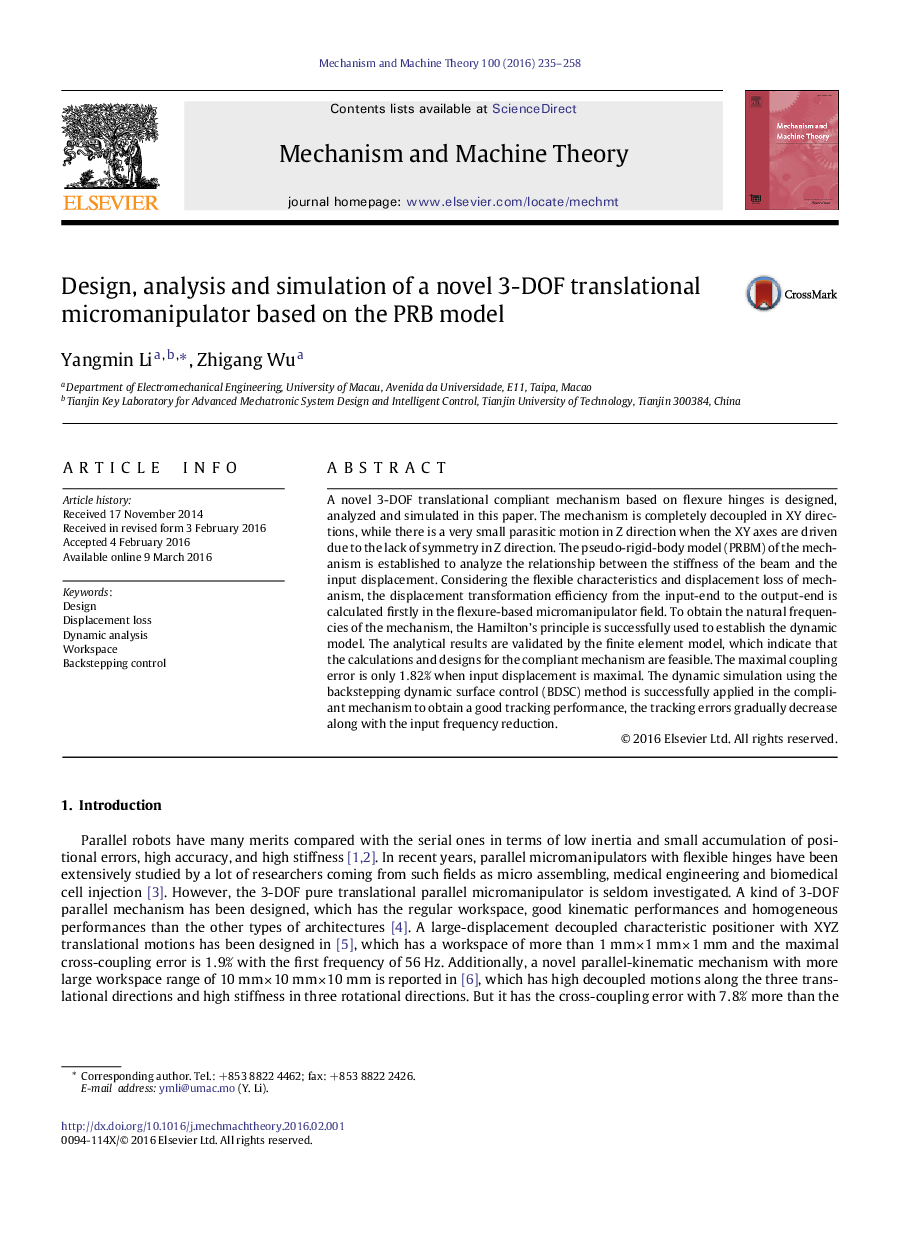| کد مقاله | کد نشریه | سال انتشار | مقاله انگلیسی | نسخه تمام متن |
|---|---|---|---|---|
| 802996 | 1467735 | 2016 | 24 صفحه PDF | دانلود رایگان |

• A symmetric translational 3-DOF micromanipulator based on pseudo-rigid-body model is proposed.
• The transferring efficiency from the input-end to the output-end of motion stage is defined and calculated.
• The Hamilton's principle is adopted to analyze the dynamic model.
• The ANSYS software of FEM is used to validate the calculation results.
• The backstepping dynamic surface control method is applied to the micromanipulator.
A novel 3-DOF translational compliant mechanism based on flexure hinges is designed, analyzed and simulated in this paper. The mechanism is completely decoupled in XY directions, while there is a very small parasitic motion in Z direction when the XY axes are driven due to the lack of symmetry in Z direction. The pseudo-rigid-body model (PRBM) of the mechanism is established to analyze the relationship between the stiffness of the beam and the input displacement. Considering the flexible characteristics and displacement loss of mechanism, the displacement transformation efficiency from the input-end to the output-end is calculated firstly in the flexure-based micromanipulator field. To obtain the natural frequencies of the mechanism, the Hamilton's principle is successfully used to establish the dynamic model. The analytical results are validated by the finite element model, which indicate that the calculations and designs for the compliant mechanism are feasible. The maximal coupling error is only 1.82% when input displacement is maximal. The dynamic simulation using the backstepping dynamic surface control (BDSC) method is successfully applied in the compliant mechanism to obtain a good tracking performance, the tracking errors gradually decrease along with the input frequency reduction.
Figure optionsDownload as PowerPoint slide
Journal: Mechanism and Machine Theory - Volume 100, June 2016, Pages 235–258